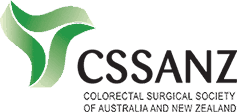Introduction
Pilonidal disease involves the development of one or more sinuses and in some cases abscesses that generally require surgical treatment.
Different approaches may be recommended depending on the stage and complexity of the condition. Where there is only one sinus the standard procedure is as an excision of diseased tissue and primary closure of the wound. In some cases, the wound may be left open, or a flap may be created to achieve wound closure. Where there is more than one sinus or there are multiple tracks under the skin, a wider excision may be required. If an abscess has developed in one or more sinuses, infected material (i.e. pus) will need to be removed via an incision and drainage before the main procedure can be carried out.
Procedures
All of the following procedures are carried out under general anaesthetic and generally do require a hospital overnight stay.
Abscess incision and drainage
This is performed under a general anaesthetic. An incision is made to the abscess so that the infected material can drain out. The abscess space is washed and a dressing inserted, called a “pack” to stop the area from bleeding. This pack is generally removed the following day and thereafter no further packing is usually required. The site is assessed at a follow up visit around 4-6 weeks later, where it will be decided if further treatment is required.
Excision and primary closure (Karydakis Procedure)
This procedure involves the removal of the pilonidal sinus (or sinuses) and any associated subcutaneous tracks. The term 'primary closure' means that the resulting wound is closed with stitches. A Karydakis Procedure involves freeing healthy tissue to create a flap to achieve closure of the wound away from the middle of the tailbone. A drain tube is usually placed for 24 hours under the wound to remove any excess fluid. Stitches are usually removed after two weeks.
Wide excision
Wide excision involves the removal of multiple sinuses and/or subcutaneous tracks and, instead of closing the wound, it is left open to heal from inside-out. This technique involves a longer recovery time as the wound is left open, however the recurrence rate and wound infection rate are lower. Sometimes a vacuum dressing is placed into the wound, which can speed healing time significantly.
Other procedures used to treat pilonidal disease include Bascom’s Procedure and a Limberg flap.
Postoperative Instructions
There will be some level of discomfort, particularly in the 48 hours after surgery. This can be controlled with pain medication. A course of antibiotics is also provided to minimise the risk of infection.
Any dressings are generally left on for two weeks if possible. Once dressings are removed, the site should be cleaned 2-3 times daily (ideally in the shower) using water and gently dabbing the area dry with a towel.
Normal activity should be resumed gradually over a three-week period after surgery. Any possibility of direct pressure (or a blow) to the wound should be avoided in the three weeks after surgery. It is advisable to sit or lie to one side to avoid this and not to bend over too far. Any contact sports should be postponed for at least 4 weeks.
Risks
The risks of pilonidal surgery include:
- Recurrence.
- Infection.
- Bleeding.
- Partial breakdown of the wound ('dehiscence').
- Slow wound healing.





